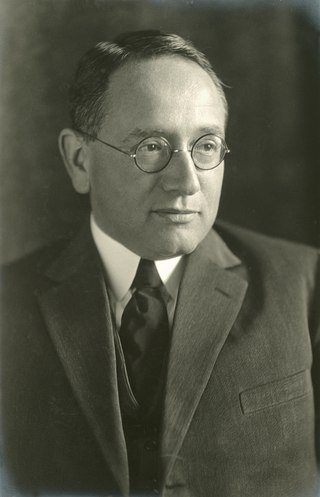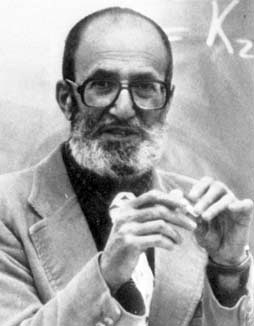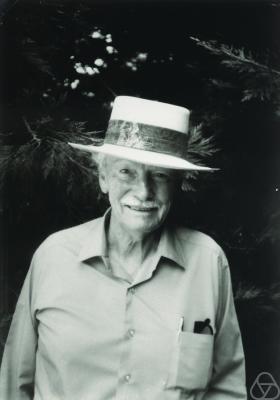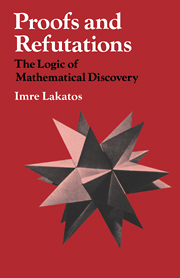Related Research Articles

George Pólya was a Hungarian-American mathematician. He was a professor of mathematics from 1914 to 1940 at ETH Zürich and from 1940 to 1953 at Stanford University. He made fundamental contributions to combinatorics, number theory, numerical analysis and probability theory. He is also noted for his work in heuristics and mathematics education. He has been described as one of The Martians, an informal category which included one of his most famous students at ETH Zurich, John von Neumann.

The Mathematical Association of America (MAA) is a professional society that focuses on mathematics accessible at the undergraduate level. Members include university, college, and high school teachers; graduate and undergraduate students; pure and applied mathematicians; computer scientists; statisticians; and many others in academia, government, business, and industry.

The American Mathematical Society (AMS) is an association of professional mathematicians dedicated to the interests of mathematical research and scholarship, and serves the national and international community through its publications, meetings, advocacy and other programs.

Paul Richard Halmos was a Hungarian-born American mathematician and statistician who made fundamental advances in the areas of mathematical logic, probability theory, statistics, operator theory, ergodic theory, and functional analysis. He was also recognized as a great mathematical expositor. He has been described as one of The Martians.

Ivan Morton Niven was a Canadian-American mathematician, specializing in number theory and known for his work on Waring's problem. He worked for many years as a professor at the University of Oregon, and was president of the Mathematical Association of America. He was the author of several books on mathematics.

Proofs and Refutations: The Logic of Mathematical Discovery is a 1976 book by philosopher Imre Lakatos expounding his view of the progress of mathematics. The book is written as a series of Socratic dialogues involving a group of students who debate the proof of the Euler characteristic defined for the polyhedron. A central theme is that definitions are not carved in stone, but often have to be patched up in the light of later insights, in particular failed proofs. This gives mathematics a somewhat experimental flavour. At the end of the Introduction, Lakatos explains that his purpose is to challenge formalism in mathematics, and to show that informal mathematics grows by a logic of "proofs and refutations".

Isaak Moiseevich Yaglom was a Soviet mathematician and author of popular mathematics books, some with his twin Akiva Yaglom.
Harold Mortimer Edwards, Jr. was an American mathematician working in number theory, algebra, and the history and philosophy of mathematics.
William Charles Waterhouse was an American mathematician. He was a professor emeritus of Mathematics at Pennsylvania State University, after having taught there for over 35 years. The early part of his career was at Cornell University. His research interests included abstract algebra, number theory, group schemes, and the history of mathematics.
Anneli Cahn Lax was an American mathematician, who was known for being an editor of the Mathematics Association of America's New Mathematical Library Series, and for her work in reforming mathematics education with the inclusion of language skills. Anneli Lax received a bachelor's degree in 1942 from Adelphi University and her doctorate in 1956. She was a professor of mathematics at New York University's Courant Institute. She was married to the mathematician Peter Lax.
Bogdan Suceavă is a Romanian-American mathematician and writer, working since 2002 as professor of mathematics at California State University Fullerton. He is also a honorary research professor with the STAR-UBB Institute, Babeș-Bolyai University, Cluj-Napoca, Romania.
James Edward Humphreys was an American mathematician who worked in algebraic groups, Lie groups, and Lie algebras and applications of these mathematical structures. He is known as the author of several mathematical texts, such as Introduction to Lie Algebras and Representation Theory and Reflection Groups and Coxeter Groups.
Anthony Joseph Tromba is an American mathematician, specializing in partial differential equations, differential geometry, and the calculus of variations.
Elena Anne Corie Marchisotto is a mathematician, mathematics educator, and historian of mathematics. She is a professor emeritus of mathematics at California State University, Northridge.
Giuliana P. Davidoff is an American mathematician specializing in number theory and expander graphs. She is the Robert L. Rooke Professor of Mathematics and the chair of mathematics and statistics at Mount Holyoke College.
Donald Steven Passman is an American mathematician, specializing in ring theory, group theory, and Lie algebra theory.
The Geometry of Numbers is a book on the geometry of numbers, an area of mathematics in which the geometry of lattices, repeating sets of points in the plane or higher dimensions, is used to derive results in number theory. It was written by Carl D. Olds, Anneli Cahn Lax, and Giuliana Davidoff, and published by the Mathematical Association of America in 2000 as volume 41 of their Anneli Lax New Mathematical Library book series.
Robert A. (Bob) Bosch is an author, recreational mathematician and the James F. Clark Professor of Mathematics at Oberlin College. He is known for domino art and for combining graph theory and mathematical optimization to design connect-the-dots eye candy: labyrinths, knight's tours, string art and TSP Art.
David Earl Zitarelli was an American mathematician and historian of mathematics, known for his 2-volume work on the history of mathematics in the United States and Canada.
Nicholas Donat Kazarinoff was an American mathematician, specializing in differential equations. In 1988 he was elected a Fellow of the American Association for the Advancement of Science (AAAS).
References
- ↑ "Book Series | Mathematical Association of America".
- ↑ "AMS/MAA Series". American Mathematical Society.
- ↑ Ferguson, W. Eugene (1961). "SMSG: New Mathematical Libray". Science. 134 (3489): 1514–1515. doi:10.1126/science.134.3489.1514.b.
- 1 2 Saul, Mark (August 2000). "Anneli Cahn Lax (1922–1999)" (PDF). Notices of the AMS. 47 (7): 766–769. Retrieved July 13, 2012.
- ↑ Lax, Anneli (1965). "Mathematical Education Notes". The American Mathematical Monthly. 72 (9): 1014–1020. doi:10.1080/00029890.1965.11970658.
- ↑ "Anneli Lax New Mathematical Library" (PDF). Mathematical Association of America. (1st 47 volumes in the series)
- ↑ Stenger, Allen (July 4, 2020). "Review of Numbers: Rational and Irrational by Ivan Niven". MAA Reviews, Mathematical Association of America.
- ↑ Olds, Carl Douglas (1963). Continued Fractions. Random House. p. ii. ISBN 978-0-394-01565-1.
- ↑ NML/011 ebook 1963 front matter, Hungarian Problem Book I: Based on the Eötvös Competitions, 1894–1905 - Translated by Elvira Rapaport, Brooklyn Polytechnic Institute